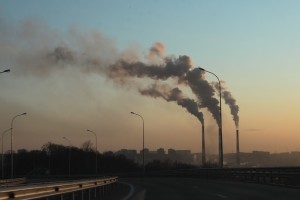Speculating on What the Trump Administration Will Mean for Cleantech and Transportation

I’m not sure you have to speculate per se; he’s been totally explicit about his energy and transportation policy, i.e., any restrictions that could remotely be construed to hurt the economy are gone on his first day in office. This means a complete green light for fossil fuel exploration and a “review” of all automotive emission standards. Recently, The Wall Street Journal quoted John Mashburn, a Trump senior policy adviser as saying: “The Trump Administration will complete a comprehensive review of all federal regulations. This includes a review of the fuel economy and emissions standards to make sure they are not harming consumers or American workers.”
Your second question is an important one. I wish I had a good answer other than “weather the storm and hope for better luck in 2020.” When clean transportation competes head on head with gasoline and diesel engines, which are heavily subsidized and given a pass on environmental damage, it’s tough going, to say the least.

Craig,
I’m not pessimistic. Those projects or technology which relies on ” ongoing” Taxpayer/consumer assistance, could find the going tough.
However, genuinely superior clean tech will still survive and prosper simply because it can compete more economically. The greatest fear is if a lack of incentive is provided for long term recapitalization of US industry. It was short term, excessive shareholder return at the expense of future growth, that destroyed US industry.
The measure of the Trump Presidency is how he will handle long term thinking.
(Incidentally, the oil industry has no significant subsidies, that’s a bit of a myth).
Even Trump, and the collection of misfits he seems to be attracting, must understand the need for R&D funding if the US is to remain competitive.
Actually, there IS room for speculation about what Trumpet will do. He has reversed his position on a number of issues and softened his position on other issues. Many of his statements seem to be intended to influence the audience which he is addressing at the moment.
It seems to me that what WILL harm the US economy is if US car makers fall further behind their global competitors in vehicle efficiency.
Already, US models are regarded almost as a joke in much of the rest of the developed world, and will increasingly be excluded from the global market as non compliant with emission standards in Europe, Japan, and China to name just a few.
Good point.
As I’ve said before, there has been something wrong with the U.S. car industry for decades. The automatic transmission was a General Motors invention which was first introduced in late 1939 on the 1940 Oldsmobile. The transistor and integrated circuits were U.S. inventions. Yet, the first computerized automatic transmissions was introduced about 1985 on the Toyota Camry.
Electronic multi-point fuel injection was a U.S. invention and was introduced experimentally in the late 1950s on a Rambler. A version of it, made by Bosch, became available on some European cars in the late 1960s but not on American cars until sometime after 1980.
Industrial robots were a U.S. invention but Japanese car manufacturers were using them years before U.S. car manufacturers were.
Double overhead camshafts and four valves per cylinder were on the Duesenburg slightly before 1930 and were common on Japanese cars by 1980 but not on American cars until much later.
When emissions controls became more stringent in the late 1960s, the effect on American cars was horrible. When you stepped on the gas to move out, the car would surge ahead, hesitate, often cough through the carburetor, then accelerate. Meanwhile, Japanese cars met the emissions requirements and still ran beautifully.
Fortunately, the American car industry has improved somewhat in response to foreign competition, but we could have been leaders and instead relinquished the lead to the Europeans and Japanese.